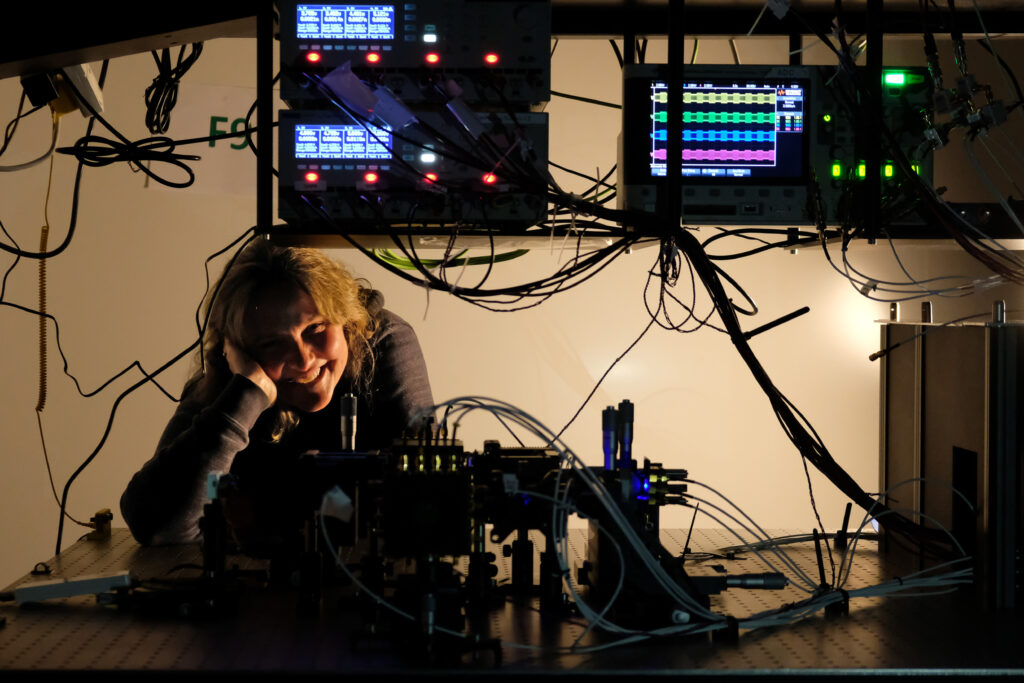There’s an old saying: When the only tool you have is a hammer, every problem looks like a nail.
Sometimes referred to as “the law of the instrument,” that hammer-and-nail idea is a common pitfall in research; when you’re not open to questioning your own methods, you might miss an opportunity for learning and impact.
For a multidisciplinary group of researchers at the Microsoft Research Lab in Cambridge, U.K., the mission was to build a new kind of computer that would transcend the limitations of the binary systems in rapidly solving complex problems. But the willingness to entertain big questions like “What is the nature of this tool we are designing?” and “What is the ‘nail’ we can hammer with it?” was key to success in building a computer that can solve practical problems at the speed of light.
To start, they built the first 8-variable optical computer of its kind. The computer uses different intensities of light to compute at the same location where the information is stored. The researchers called the device they built AIM, for Analog Iterative Machine.
“It is always the case that if you make some technological advancement, typically in the beginning it will not be clear how to use it in practice,” says Christos Gkantsidis, one of the three principal researchers on the project. He was recalling how they originally hoped to use AIM as a tool to accelerate machine learning. “There is a bit of research figuring out which practical problems are more of a natural fit for them.”
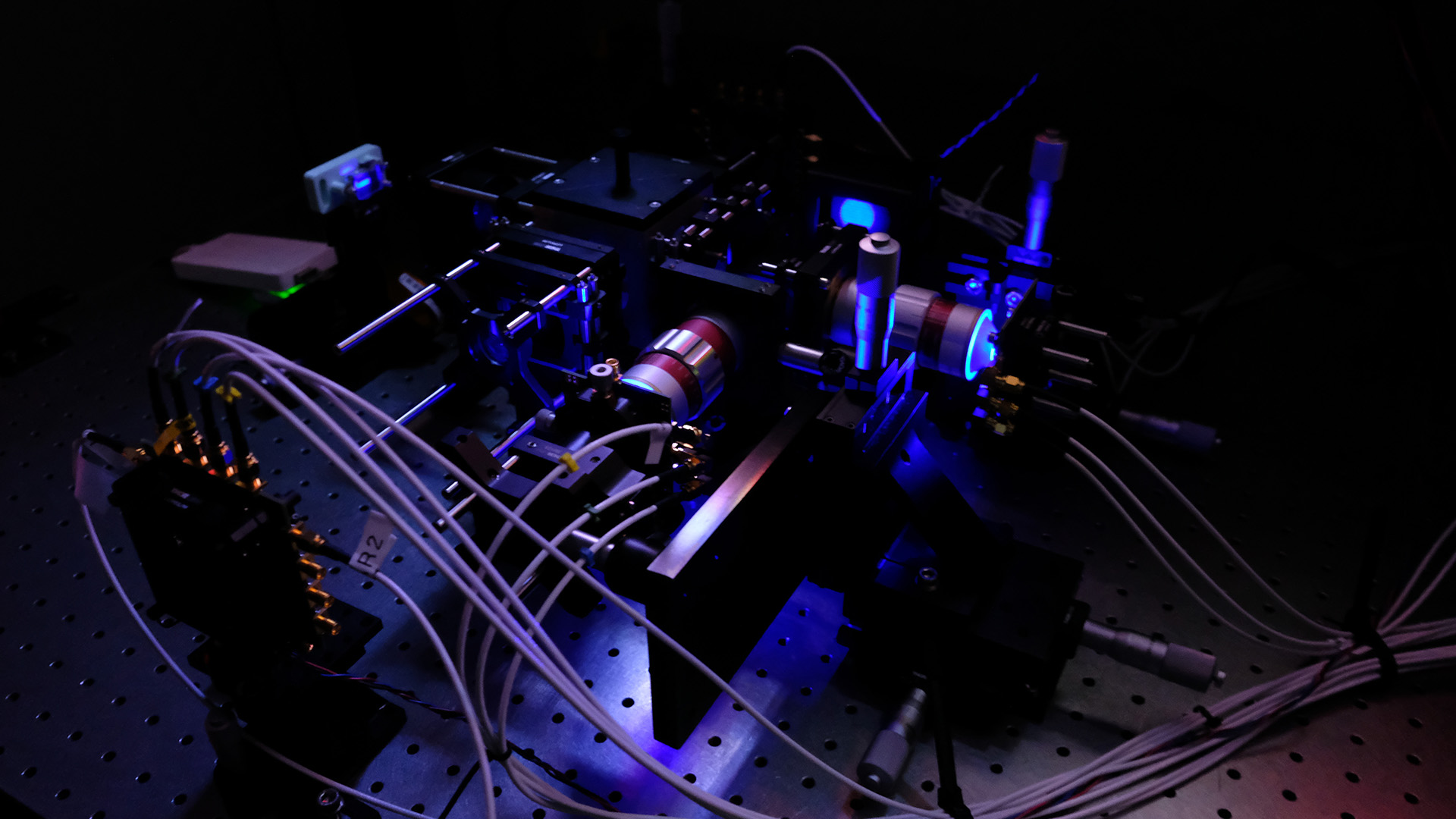
About three years ago, they tried using AIM to solve a particularly vexing but important type of math problem – optimization. They quickly realized this new device had the potential to greatly surpass the speed and capacity of the binary systems used in typical computers in solving these optimization problems.
“Basically, optimization runs the world as we know it,” says Gkantsidis. Optimization problems underlie many of society’s most important structures – among them: banks and finance, healthcare, logistics and manufacturing.
The promise of this new computer has led to a one-year research agreement with Barclays Bank PLC to investigate the potential of using it to solve a real-world problem – how batches of transactions are settled at the clearing houses used by most banks. The number of transactions goes into the hundreds of thousands daily. Like most optimization problems, it’s the sheer scale that foils the capacity of binary computers to solve it.
“Effectively, it would take the lifetime of the universe to evaluate all the possible options,” says Lee Braine, managing director and distinguished engineer in the chief technology office at Barclays. Currently, he says, a variety of computing and mathematical shortcuts are used to make a sophisticated estimation of the most effective way to settle batches of tens of thousands of transactions.
The AIM team had already run what they call a “toy version” of the transaction settlement problem posed by Braine, and the optical computer solved it with 100% accuracy every time. A previous research effort at solving the same problem using a different technology was only hitting the mark about 50% of the time.
Braine is himself a computer scientist who has done extensive research on optimization. Now he and the Microsoft team have begun designing a larger-scale version of the problem using more data and variables. They hope to test it on an upgraded version of AIM later this summer. Braine says working with Microsoft’s AIM team is a unique opportunity. “It’s very exciting to be involved in something that has the potential to create innovative change,” he says. “To be on the leading edge of what’s possible.”
The end of Moore’s Law
In 1965, the engineer (and a founder of Intel) Gordon Moore predicted that the number of transistors in an integrated circuit would double every year. He later changed his prediction to every two years, and for decades, the capacity of computers has increased at roughly that rate, getting progressively faster and smaller without getting more expensive. But in the past decade, the trend has plateaued. At the same time, demand for computing capacity and speed has only grown.
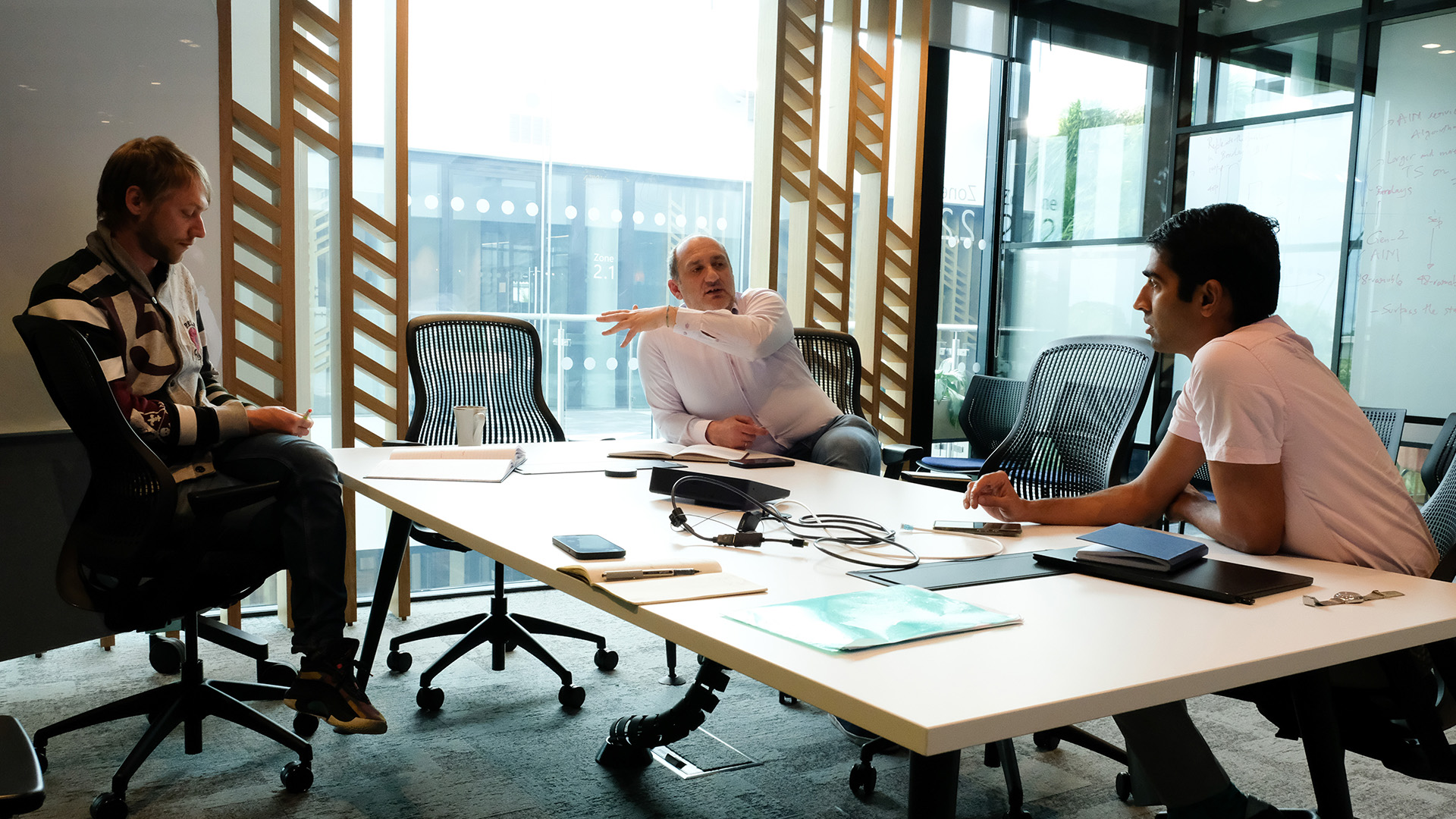
“The problem is, once you get past this inflection point, it becomes much more difficult to sustain that kind of growth,” says Hitesh Ballani, one of the other Microsoft researchers working on the optical computer, explaining the urgency behind developing alternative technologies like optics. “Because we had already been working on optical storage and networking, it was kind of organic to move to optical computing, although that is the toughest nut to crack.”
The lab in Cambridge has had some success with optical storage. The team developed a system of storing enormous amounts of data embedded in pieces of glass.
In a meeting room at the lab, Ballani speaks rapidly and cheerfully. He explains the basics of optical computing and why the team brought in a mathematician to help develop a new type of algorithm to solve optimization problems. He used a red marker to cover a whiteboard and then two sets of floor-to-ceiling windows with notes, equations and graphs to illustrate his points.
“It is not a general-purpose computer,” he says. “But it is very, very useful for accelerating applications where these mathematical operations, linear algebra and non-linear algebra, are the key operational bottlenecks.”
For nearly 50 years, light has been used to transmit data using fiber-optic cables. Photons do not interact with each other, but when passed through an intermediary, like the sensor in your smartphone camera, they can – in a sense – be read.
In the case of AIM, different intensities of light can be used to add and multiply, the basis for optimization problems. Operating at the speed of light, advanced versions of AIM should be able to transcend the speed of binary computers by about a hundred times, Ballani says. Further, computation and storage happen at the same place in AIM, unlike binary computers, which need memory in one location and compute in another to function.
Breaking new ground in algorithms
As an example of the kind of problem AIM could solve, he cites an exchange with a Microsoft health researcher about ways to reduce the time needed to conduct an MRI scan with the same level of resolution. (Typically, they take between 15 and 90 minutes depending on the size of the area being scanned.) Some techniques to shorten that time are already in use but involve compromises. Running what is now a time-consuming optimization equation would theoretically bring more accuracy and speed. “If we are able to solve the optimization problem very, very quickly, it might be possible to do an MRI in less than a minute,” Ballani says.
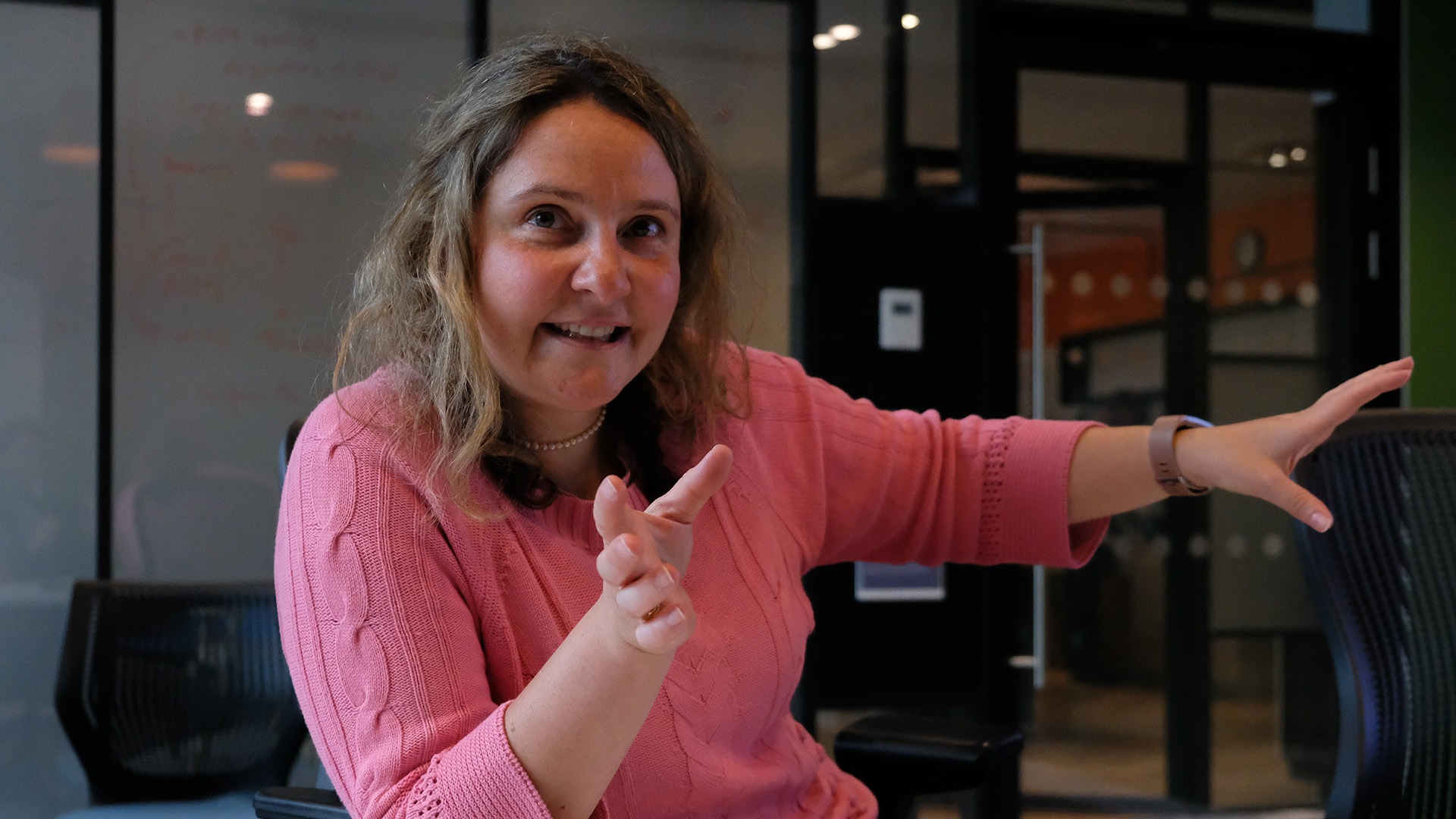
Francesca Parmigiani, the third primary researcher on AIM, did her Ph.D. in the field of optical communication. Now she is leading the effort to build the optical computer itself. She and her small team are currently developing an upgraded version that will operate with 48 variables, greatly expanding the complexity of problems the optical computer can solve. Eventually, they hope to build a version of AIM with thousands of variables.
The AIM team is using components that already exist and have a manufacturing system – from fiber-optic cables to modulators to micro-LED lights – to create, and now upgrade, AIM. As it exists now, the computer is built on a metal bench about the size of a dining room table, with tangles of wires emerging from modulators and linking to what the researchers sometimes refer to as a “projector,” similar to a multimedia projector that stores and computes the data.
“As I pivoted to building this computer, I had to learn a lot,” Parmigiani says. “I had no clue about optimization.”
The process of building AIM and mapping problems to its novel form has involved a large amount of give-and-take between Parmigiani and the optical and analog team, who works on the hardware, and Ballani, Gkantsidis and the mathematician Kirill Kalinin, who work on the algorithms and software that will run on it. The researchers say that the innovations in math and algorithms they have developed are as critical as the machine itself in solving optimization problems. The novel type of algorithm being used in AIM is known as QUMO, for quadratic unconstrained mixed optimization, and its use with the optical computer is what makes AIM unique in the world.
“The story has been changing as we move forward because we learn what makes sense and what doesn’t make sense,” Parmigiani says. “We realized we really need to work very hard to figure out how to co-design the hardware with the algorithm.”
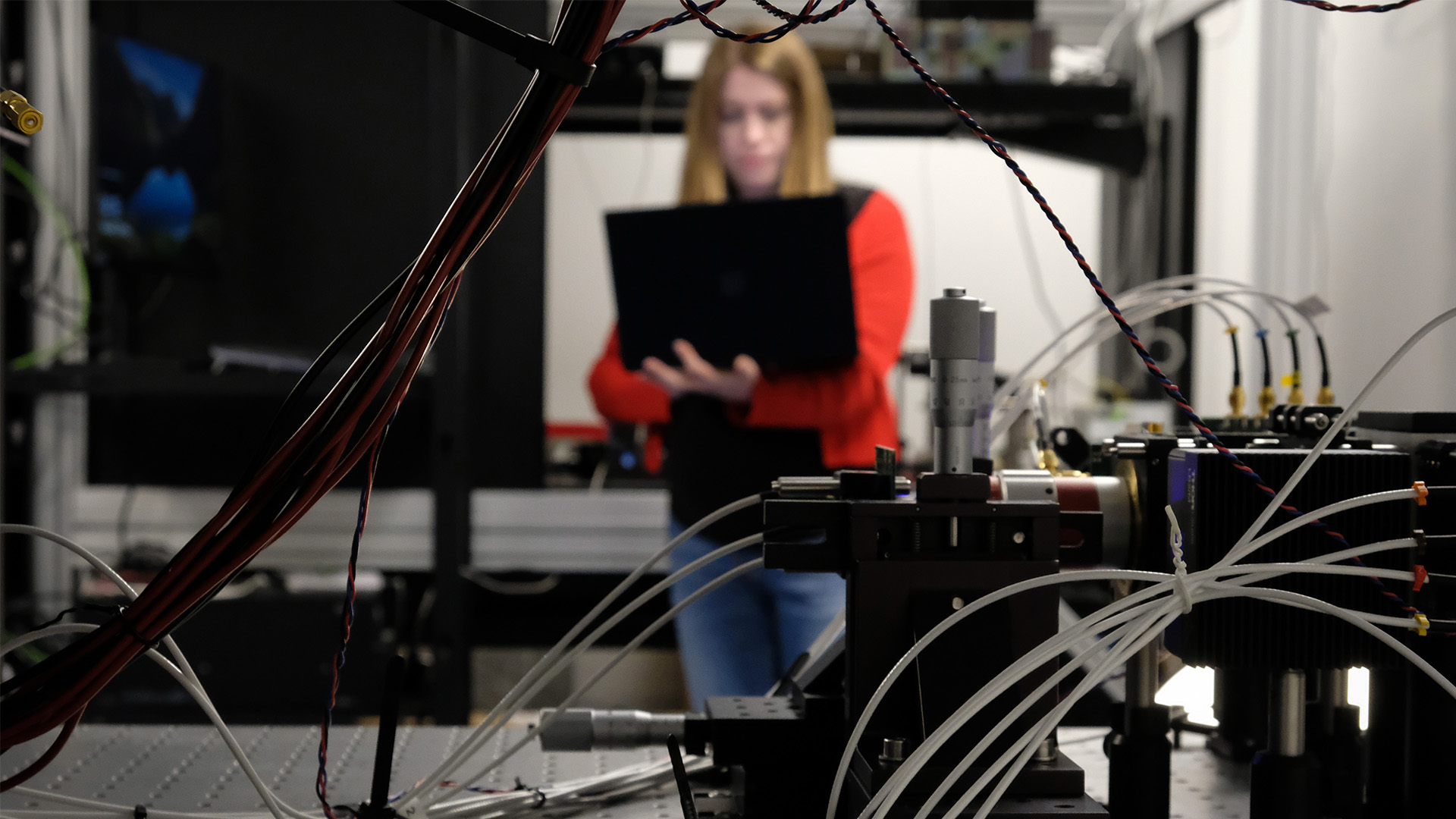
Working ‘at the leading edge’
The AIM team is now turning its attention to testing the device and the QUMO algorithm with problems proposed by industry experts and academics. They are opening a service using an AIM simulator that solves large optimization problems using a graphics processing unit (GPU). The team wants more test cases to help them learn about the potential of the tool they have built.
The transaction settlement problem proposed by Lee Braine of Barclays is a priority.
The problem is difficult to solve because of the volume of transactions. Braine says these transactions are usually described as delivery versus payment. A simple example is the delivery of a security for a cash payment – 100 shares in a company for $1,000. The problem is that every transaction and every player is subject to various constraints, including regulations and the balances available.
The amount of these kinds of trades is staggering. He cited the example of just one clearing house, DTCC, whose subsidiaries processed transactions worth $2.5 quadrillion in 2022. (One quadrillion is equal to 1,000 trillion.)
Because clearing houses are used by most large banks, the research has the potential to benefit the entire banking system. The results of the one-year trial will be shared in a research paper.
Braine says that this is a good test case, but if it works, it could pave the way for using optical computing to tackle other problems in the banking world, such as fraud detection.
He says the project speaks to the curious researcher in him. “In a way, it can go back to those days in academia of doing the Ph.D. where you’re looking for something at the leading edge,” he says. “That point of operating on the boundary, looking to push the envelope and to contribute to it in a small way. It’s very exciting.”
Ant Rowstron, a Microsoft Distinguished Engineer and the team lead, says it has been rewarding to watch his multidisciplinary group work together in inventing a new kind of computer tool, overcoming setbacks and finding a promising direction for using it.
“Part of my job is to try to understand when we’re on to something new and to support the people with the risk that they’re taking,” he says. “We took the belief that if we built it, we would work out how to take it forward. And now we have an important problem space where there is a pressing need and where our computer really shines.”
Top photo: Francesca Parmigiani with AIM, or Analog Iterative Machine. It’s an “optical” computer that uses different intensities of light to compute data. Photo by Chris Welsch for Microsoft.

